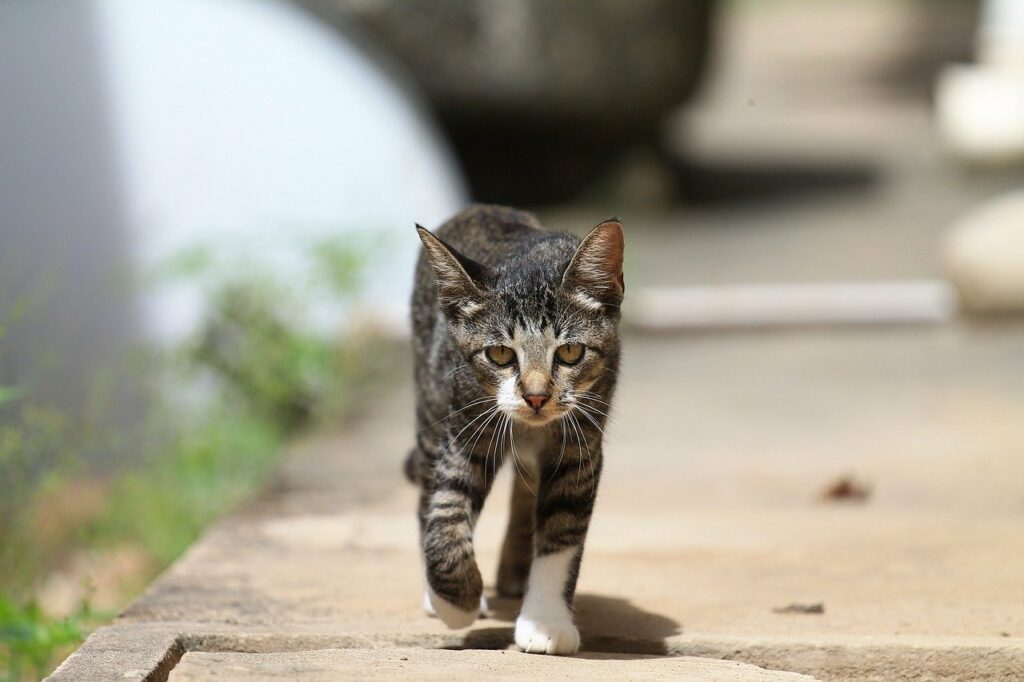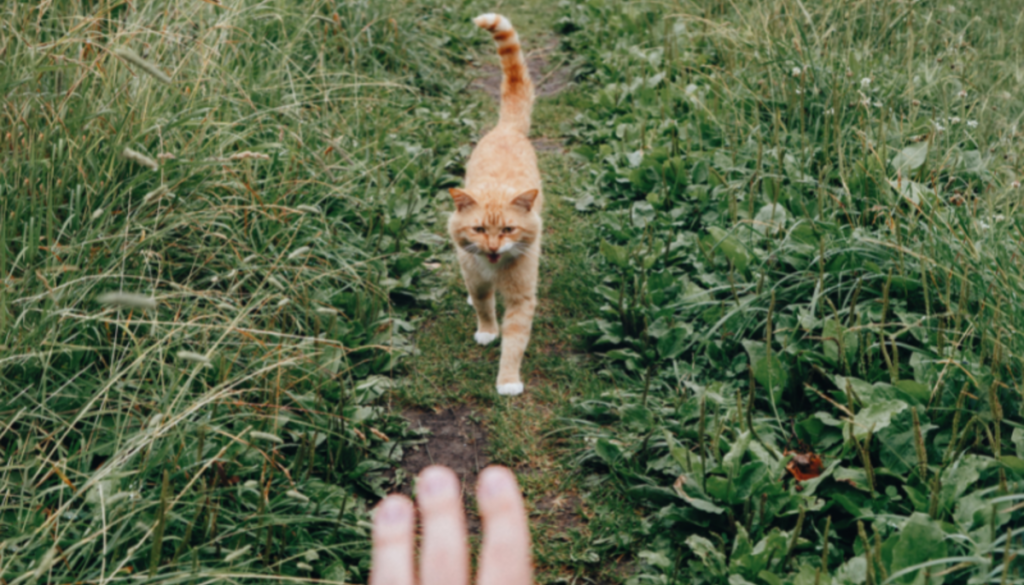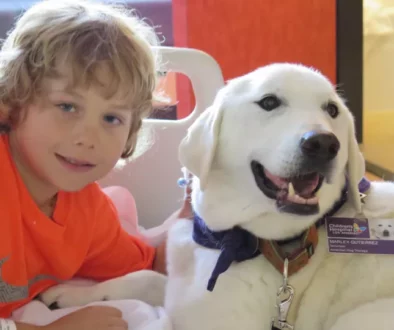Teaching Your Cat to Come When Called
Cats are known for their independent nature, but with the right approach, you can teach them to come when called. Unlike dogs, cats may require a bit more finesse in training, considering their unique personalities. In this article, we’ll explore effective techniques to create a strong bond with your cat and guide you through the process of teaching the “come” command. If you’re wondering about the best approach to teaching your cat to come when called, consider starting in a quiet and familiar environment.
Owning a cat comes with its own set of joys and challenges. One common challenge is getting your feline friend to respond when called. While it may seem like a daunting task, the bond you build during the training process can be incredibly rewarding. Let’s delve into the steps to make this happen.
Understanding Your Cat’s Nature
Cats, with their enigmatic personalities, are renowned for their independent nature. Unlike their canine counterparts, cats often march to the beat of their own drum, making training a unique and sometimes challenging endeavor.
Exploring the Independent Nature of Cats
Cats are inherently independent creatures. From the ancient days of being revered as symbols of mystery and guardianship, they have maintained a sense of autonomy. Understanding and respecting this independence is paramount when embarking on the journey of training.
Cats, by nature, are not as eager to please as dogs. While dogs often thrive on praise and seek approval, cats may require a more nuanced approach. This independence can be both a blessing and a challenge, making it essential to tailor training methods to their distinct characteristics.

The Challenges of Training a Cat Compared to a Dog
Training a cat presents distinct challenges when juxtaposed with training a dog. Dogs are pack animals with a natural inclination to follow a leader, making them more amenable to structured training routines. Cats, on the other hand, may view training as an optional activity, influenced by their mood and interests.
One challenge lies in the way cats perceive commands. Unlike dogs that may readily respond to vocal cues, cats often assess the situation before deciding whether to comply. This selective responsiveness requires a trainer to be patient, understanding, and adaptable.
Building a Strong Bond with Your Cat
Importance of a Strong Human-Cat Bond in Training
Building a strong bond with your cat is the cornerstone of successful training. Cats, by nature, respond more positively to commands and guidance when they feel a deep connection with their human companions. The bond you cultivate during non-training moments profoundly influences your cat’s willingness to engage in the training process.
Invest time in activities that create positive associations with your presence. Play, grooming, and gentle interactions contribute to a sense of security and camaraderie. A cat that trusts you is more likely to view training as a collaborative effort rather than a task to be endured.
Establishing Trust Through Positive Interactions
Trust forms the foundation of any relationship, including the one you share with your cat. Positive interactions foster a sense of security and reliability, making your cat more receptive to training. Avoid forceful or intimidating actions, as they can erode trust and hinder the training process.
Use treats, gentle strokes, and verbal praise to reinforce positive behaviors. Cats appreciate a calm and reassuring demeanor, so approach interactions with patience and a gentle touch. By establishing trust, you create an environment where your cat feels safe to explore and learn.
Choosing the Right Training Time
Identifying Optimal Times for Training Sessions
Timing plays a crucial role in the effectiveness of cat training. Cats have natural rhythms and preferences regarding when they are most receptive to learning. Observe your cat’s behavior to identify periods of alertness and curiosity. These moments are opportune for engaging in training sessions.
Morning and evening often align with peak activity levels for many cats. However, individual variations exist, so pay attention to your cat’s energy patterns. Choose times when your cat is naturally more active and alert to maximize the chances of a positive training experience.
Considering Your Cat’s Energy Levels and Mood
A cat’s energy levels and mood directly impact their responsiveness to training. Avoid attempting training sessions when your cat is sleepy or disinterested, as this can lead to frustration for both you and your feline companion. Instead, opt for moments when your cat is playful and curious.
Tailor your training sessions to align with your cat’s mood. If your cat seems more reserved, start with shorter sessions and gradually increase the duration as their comfort and interest grow. Being attuned to your cat’s emotions ensures a positive training environment and enhances the likelihood of success.

Creating a Positive Training Environment
Setting Up a Comfortable and Distraction-Free Space
The environment in which you conduct training plays a pivotal role in its success. Cats thrive in familiar, comfortable surroundings, so designate a quiet and distraction-free space for training sessions. Minimize loud noises and ensure the area is free from potential stressors.
Create a positive association with the training space by incorporating elements your cat enjoys. A cozy blanket, familiar toys, or a favorite perch can contribute to a sense of security. A comfortable environment sets the stage for focused and positive training experiences.
Using Treats and Rewards to Motivate Your Cat
Motivation is key to capturing your cat’s interest during training. Utilize treats and rewards that your cat finds particularly enticing. The right incentive can vary from cat to cat, so experiment to discover what resonates with your feline friend.
Associate treats with successful responses to commands, creating a positive reinforcement loop. Be consistent in rewarding desired behaviors, and gradually reduce the frequency of treats as your cat becomes more adept at following commands. This ensures a sustained motivation for learning and cooperation.
Introducing the Command: Come
Teaching the Basic Command and Its Significance
Teaching your cat the “come” command is a fundamental step in enhancing communication and ensuring their safety. Begin in a quiet and familiar space, using a clear and gentle voice to say “come.” Pair the command with positive gestures, such as patting your leg or extending your hand, to create a visual cue.
Repeating the Command in a Consistent and Clear Manner
Consistency is key when introducing the “come” command. Repeat the command in a clear and calm tone, ensuring that the pronunciation remains consistent. Cats respond well to repetition and clarity, gradually associating the command with the desired action.
Positive Reinforcement Techniques
Rewarding Your Cat with Treats and Affection
Positive reinforcement is a powerful tool in cat training. When your cat responds to the “come” command, immediately reward them with treats or affection. This positive association reinforces the behavior, encouraging your cat to repeat it willingly.
Reinforcing Good Behavior to Strengthen the Training
Consistently reinforce good behavior to strengthen the training. Whenever your cat responds appropriately to the “come” command, provide positive reinforcement. This can include verbal praise, gentle strokes, or additional treats. The goal is to create a positive link between the command and the rewarding experience.
Patience and Consistency
Emphasizing the Importance of Patience in the Training Process
Patience is a virtue when training cats. Understand that cats learn at their own pace, and some may take longer to grasp commands. Avoid frustration and maintain a calm demeanor during training sessions. Patience fosters a positive learning environment and helps build trust between you and your cat.
Consistency in Commands and Rewards
Consistency extends beyond the training command to encompass your overall approach. Use the same command consistently, and maintain a uniform style of positive reinforcement. Cats thrive on routine, and a consistent training method reinforces the expected behavior, making it more likely to become a permanent part of their repertoire.
Gradual Progression in Training
Advancing from Short Distances to Longer Ones
Once your cat responds reliably to the “come” command in a controlled environment, gradually increase the distance. Start with short distances and, over time, extend the distance between you and your cat. This gradual progression ensures that your cat becomes comfortable and confident with the command in various scenarios.
Celebrating Small Victories to Boost Your Cat’s Confidence
Every successful response to the “come” command is a small victory worth celebrating. Acknowledge these achievements with enthusiasm, treats, and affection. Boosting your cat’s confidence through positive reinforcement creates a sense of accomplishment, motivating them to continue engaging in the training process.

Challenges
Addressing Common Obstacles in Training
Training your cat may encounter challenges, but addressing common obstacles is essential for a successful outcome. Some cats may show reluctance, while others may become easily distracted. Patience and adaptability are key as you navigate through these common challenges.
Identify specific hurdles, such as a lack of interest or fear, and tailor your training approach accordingly. A personalized strategy takes into account your cat’s unique personality, making the training process more effective and enjoyable for both of you.
Tailoring the Approach to Your Cat’s Unique Personality
Understanding Your Cat’s Personality
Every cat is an individual with distinct traits and preferences. Tailoring your training approach to your cat’s unique personality is crucial for overcoming challenges. Some cats may be more outgoing and eager to please, while others are reserved and independent.
Adapting Techniques Based on Personality
For a more introverted cat, a gentle and patient approach may be required. Use enticing treats and soothing tones to build trust. In contrast, a more extroverted cat may respond well to energetic play during training sessions. Understanding and adapting to your cat’s personality ensures that training is a positive and effective experience.
Adding Distractions to Training
Gradually Introducing Distractions to Test Your Cat’s Response
As your cat becomes more adept at the “come” command in a controlled environment, gradually introduce distractions. Start with mild disturbances, such as background noise or gentle movements. Observe your cat’s response and adjust the level of distraction based on their comfort.
Overcoming Challenges and Reinforcing the Command
Distractions can pose challenges during training, but overcoming them is a crucial step in reinforcing the “come” command. Redirect your cat’s attention back to the command through gentle encouragement and positive reinforcement. Consistency is key as you navigate distractions, ensuring your cat remains responsive in various settings.
Maintaining Enthusiasm
Keeping Training Sessions Enjoyable for Your Cat
To ensure continued engagement, it’s vital to keep training sessions enjoyable for your cat. Infuse elements of play, treats, and positive interactions to make the experience rewarding. Gauge your cat’s interest levels and adjust activities accordingly.
Switching Up Activities to Prevent Boredom
Cats can quickly lose interest if training becomes monotonous. Switch up activities, use different treats, or incorporate new toys to prevent boredom. Keeping training sessions dynamic and enjoyable fosters enthusiasm, making your cat more willing to participate.

Conclusion: Teaching your cat to come
Teaching your cat to come when called is a rewarding journey that strengthens the bond between you and your feline companion. By understanding their nature, building trust, and incorporating positive reinforcement, you can successfully train your cat. Enjoy the process, celebrate small victories, and savor the unique connection you share with your furry friend.
Also Read:
Pet Care Tips for Cats for Beginners
Pet Care Tips for Dogs for Beginners



